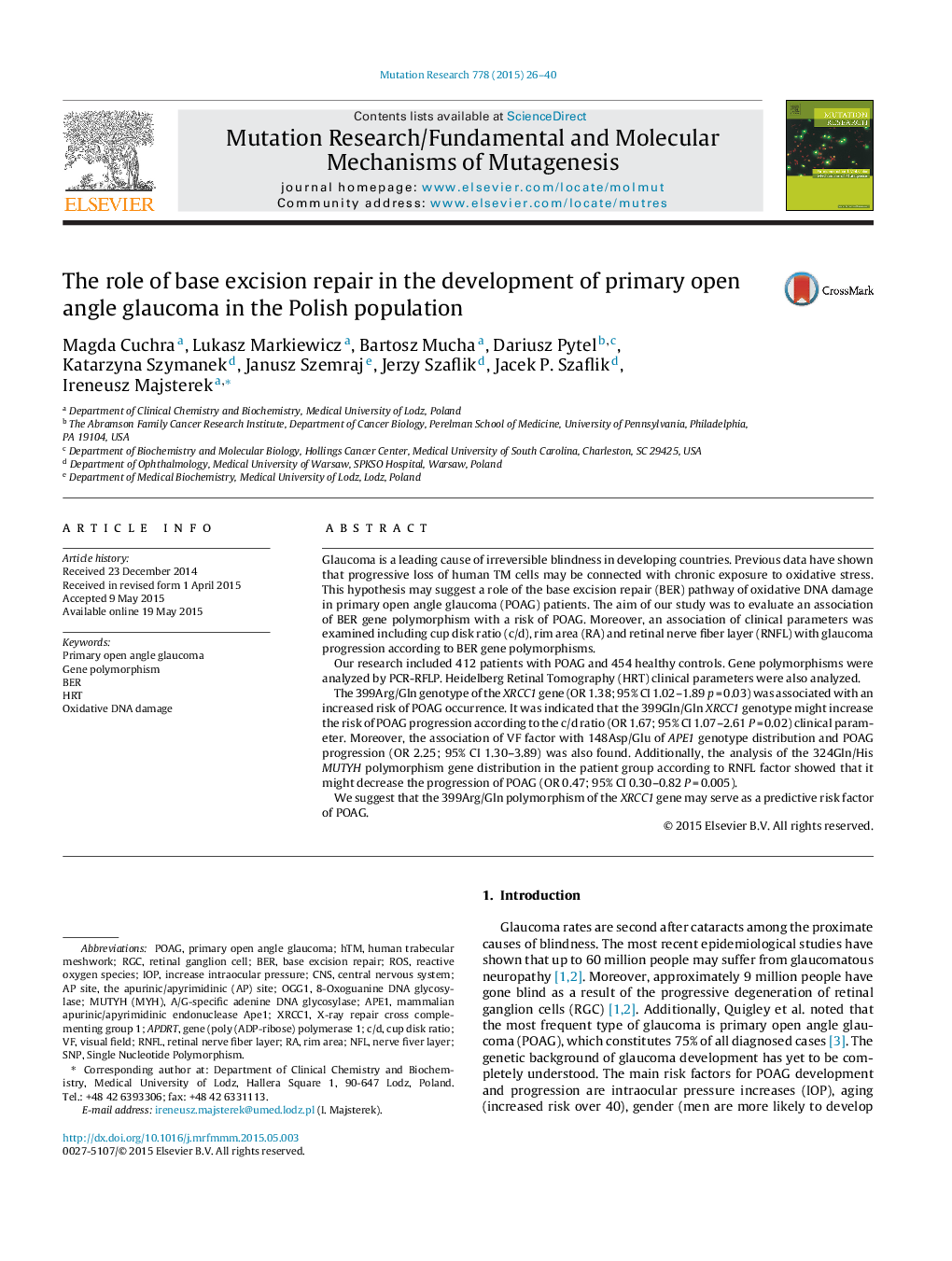| کد مقاله | کد نشریه | سال انتشار | مقاله انگلیسی | نسخه تمام متن |
|---|---|---|---|---|
| 2146216 | 1548321 | 2015 | 15 صفحه PDF | دانلود رایگان |
• We suggested the association of XRCC1 gene with the increase risk of POAG development.
• We indicated the association of clinical factor and XRCC1, MUTYH, ADPRT and APE1 genes with POAG progression.
• We postulated the increase level of oxidative DNA damage in group of patients with POAG in relation to healthy controls.
• We suggested the slightly decrease ability to repair of oxidative DNA damage.
• This is the first data that showed the role of BER mechanism in POAG pathogenesis.
Glaucoma is a leading cause of irreversible blindness in developing countries. Previous data have shown that progressive loss of human TM cells may be connected with chronic exposure to oxidative stress. This hypothesis may suggest a role of the base excision repair (BER) pathway of oxidative DNA damage in primary open angle glaucoma (POAG) patients. The aim of our study was to evaluate an association of BER gene polymorphism with a risk of POAG. Moreover, an association of clinical parameters was examined including cup disk ratio (c/d), rim area (RA) and retinal nerve fiber layer (RNFL) with glaucoma progression according to BER gene polymorphisms.Our research included 412 patients with POAG and 454 healthy controls. Gene polymorphisms were analyzed by PCR-RFLP. Heidelberg Retinal Tomography (HRT) clinical parameters were also analyzed.The 399Arg/Gln genotype of the XRCC1 gene (OR 1.38; 95% CI 1.02–1.89 p = 0.03) was associated with an increased risk of POAG occurrence. It was indicated that the 399Gln/Gln XRCC1 genotype might increase the risk of POAG progression according to the c/d ratio (OR 1.67; 95% CI 1.07–2.61 P = 0.02) clinical parameter. Moreover, the association of VF factor with 148Asp/Glu of APE1 genotype distribution and POAG progression (OR 2.25; 95% CI 1.30–3.89) was also found. Additionally, the analysis of the 324Gln/His MUTYH polymorphism gene distribution in the patient group according to RNFL factor showed that it might decrease the progression of POAG (OR 0.47; 95% CI 0.30–0.82 P = 0.005).We suggest that the 399Arg/Gln polymorphism of the XRCC1 gene may serve as a predictive risk factor of POAG.
Journal: Mutation Research/Fundamental and Molecular Mechanisms of Mutagenesis - Volume 778, August 2015, Pages 26–40
